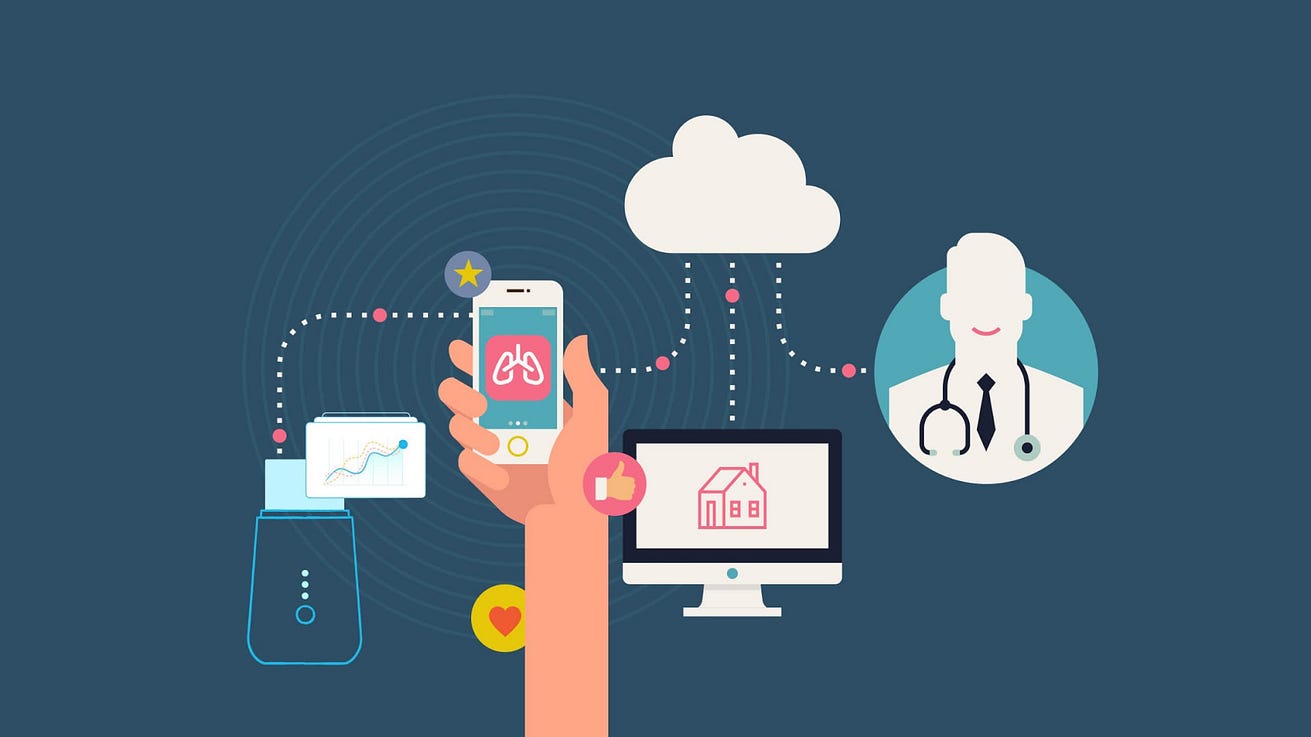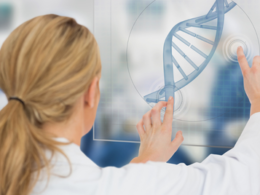Gov.UK
Policy Paper
29 June 2022
infolabhealth
Site version edited by
Joaquim Cardoso MSc.
Digital and Health Transformation — Institute
Digital Health — Unit
July 2, 2022
SECTION 2: OUR VISION FOR A DIGITAL FUTURE
This section presents a vision of the digitally transformed health and social care system in practice.
This vision is informed by engagement with over 1,000 people working across the health and social care sectors, people with lived experience of health and social care services, and health and social care specialists in the technology industry.
Our expectation is that local versions of this vision will be realised everywhere by March 2028–3 years after the health and social care system will be digitised and connected (March 2025).
Our expectation is that local versions of this vision will be realised everywhere by March 2028–3 years after the health and social care system will be digitised and connected (March 2025).
The vision is illustrated by the care journeys of 3 people, Abdul, Sarah and Kris.
Their experiences show how, by 2028, we will have moved from fragmented health and social care services that vary significantly across the country to a seamlessly joined-up system that allows people who use it to continue living as they wish.
Their experiences show how, by 2028, we will have moved from fragmented health and social care services that vary significantly across the country to a seamlessly joined-up system that allows people who use it to continue living as they wish.
A vast amount of technology-enabled, largely automated activity will happen ‘in the background’, allowing the staff working in the system to spend more time treating and caring for the people they serve.
Groups and individuals who find accessing digital services challenging will particularly need their support.
Some people may always need or prefer face-to-face engagement with health and social care professionals and the future system must continue to meet their needs.
A vast amount of technology-enabled, largely automated activity will happen ‘in the background’, allowing the staff working in the system to spend more time treating and caring for the people they serve.

How this will make a difference
It is 2028. Abdul, Sarah and Kris live in neighbouring communities covered by the same PCN.
By 2025, their local ICS, like all others, had succeeded in digitising and connecting systems, upskilling their workforce and developing a strong data, digital and technical team.
Since then, their ICS has focused on transforming health and social care services.
This is how Abdul, Sarah, Kris and their local system feel the difference…
Meet Abdul
Abdul is an 85-year-old man supported by his daughter, home care, and voluntary and community sector support that he pays for with his personal budget.
The home care provider and local authority have developed a care plan with Abdul that reflects his preferences and needs, including living independently at home.
To support his independence, the local authority has put a digital medication reminder in his home that produces audio alerts, and he also wears a smartwatch that can alert a remote team in the event of a fall.
Data from these technologies is visible to care workers and his daughter via his digital social care record.
Abdul’s daughter’s role as an unpaid carer is also recorded in her health and care record.
Abdul falls and fractures his hip. The remote team sends an ambulance to Abdul’s home and he is admitted to hospital.
Staff access and update his core health and social care information via his shared care record so his daughter and care workers are notified of the changes in his care.
Although care in the home remains an option, after his hospital admission Abdul and his family decide a care home would be the right place for him to go next because of his increased frailty.
His record is updated with a discharge letter and changes to his care plan, so the care home staff have the most up-to-date information to support his transition.
Before he arrives, the care home staff install discreet falls prevention and detection technology in his room to give Abdul and his daughter peace of mind and help him stay safe.
Meet Sarah
Sarah is a 32-year-old single mother. She has a 5-year-old son, Kyle, and is pregnant with her second child.
Sarah had a miscarriage before her current pregnancy and is experiencing anxiety, nightmares and loss of interest in daily activities.
Sarah has been tracking her mood through an app that links to her ICS’s maternity system and it sends a flag to her midwife.
The midwife messages Sarah on the app asking her to book a same-day consultation.
During the appointment, Sarah explains her symptoms and mentions she is also worried because Kyle is not feeling well and has been losing weight.
The midwife suspects Sarah is showing early symptoms of perinatal depression.
The midwife flags a referral to the mental health midwife, who facilitates an e-referral to the Improving Access to Psychological Therapies (IAPT) service and recommends Sarah book a GP appointment for Kyle.
Sarah can choose a telephone, video or in-person meeting for her first IAPT appointment, during which she will be assessed.
During her video assessment, Sarah chooses a clinician-guided digital therapy app that she can log onto in her own time, day or night, and is easy to use as it is interactive.
She can also choose to have her sessions in her preferred language via chat, audio or video.
The outcomes of Sarah’s assessment are securely submitted back to her care-giving team.
Sarah books an in-person GP appointment for Kyle through the NHS App.
The GP can see that Kyle’s weight loss has been noted on his health record by Sarah and can see data from Kyle’s school nurse.
After taking a full history and examining Kyle, the GP requests some tests.
As Kyle’s legal guardian, Sarah will be able to access Kyle’s test results via the NHS App ahead of the follow-up appointment with the GP.
Meet Kris
Kris is 56 years old, the only financial provider for their household, and has smoked on and off for the last 35 years.
They are worried their health is declining. They are not sleeping and they are getting up frequently at night to urinate.
One weekend, Kris calls 111 about a fever and ear ache.
The responder triages Kris using a clinical decision support tool and refers them to a local out-of-hours primary care clinic.
At the clinic, Kris is diagnosed with an ear infection.
Their other symptoms are recorded, along with their weight, blood pressure, smoking and anxiety levels.
This data is automatically added to Kris’s record, which they can see on the NHS App.
The advanced nurse practitioner arranges for Kris to have blood tests to check for diabetes.
Kris gets a notification through the NHS App that the results are back, requesting they book a follow-up appointment with their GP practice.
Kris chooses to book a video consultation with their GP. Together, they review the results and discuss treatment options.
Kris decides to help manage their type-2 diabetes with the support of an app.
Their practice’s social and digital prescriber helps them choose an accredited app that’s right for them.
Kris can also access support for giving up smoking and managing their mental wellbeing, blood pressure and type-2 diabetes through the NHS App.
The support tools allow Kris to track changes in their conditions over time. This data is also fed into Kris’s record.
Through the NHS App, Kris can continue to check in with their care team via structured questionnaires that can be risk stratified and then responded to in the most appropriate way.

A broader view
The care journeys above show how digitisation and connection transforms the system’s capacity to deliver the Secretary of State’s priorities for reform:
- prevention
- personalised care
- people providing services
- system performance
How this works more broadly across the digitally transformed health and care system in 2028 is explained below.
Anticipatory care that promotes prevention and independence
In 2028, outcomes for individuals, communities and whole populations are being improved by digital tools including:
- risk-based screening
- digital health checks
- access to online peer support
- virtual consultations
- at-home diagnostics
People are able to live independently and well for longer, supported by technologies chosen to meet their particular needs.
Technology is also providing routes of access, as part of multi-channel offers that reflect the needs and preferences of individuals, helping to address health inequalities related to things such as income, geography, specific characteristics such as sex, ethnicity and disability, and social exclusion.
Analysis of data, supported by machine learning plus easy-to-use data visualisation platforms, is identifying population groups who are not accessing health services as readily as they should be able to and whose outcomes are unusually poor.
These technologies also underpin timely, evidence-based decision support for frontline staff, helping them to make sure no opportunity is missed or task accidentally overlooked.
They show staff when to take pre-emptive action to prevent care needs arising or escalating, enabling staff to work more efficiently.
National digital channels, the NHS App and NHS.uk website are supporting people to access preventative services such as health checks, vaccinations and screening.
Personalising care
Digital tools help health and social care providers to plan, design and deliver services in a more personalised way while saving time for staff.
Services focus on what matters to each person and their families, helping to reduce disparities, and reflecting individual needs and preferences. Using digital tools to access information and services, people can make informed choices and gain greater control over their care.
Similarly, with more granular information and understanding of the populations they serve, health and social care providers are co-designing and delivering services that better respond to people’s needs in the right place at the right time, through multiple channels. They offer care closer to or in people’s homes, including care homes, and online.
Digitised care pathways developed with the tech industry are inclusive and deliver better quality and efficiency at the same time, as well as lower carbon emissions.
Enhancing the impact on people providing services
Having access to real-time data enables people working in the health and social care system to collaborate better.
Their organisations provide everything needed for really useful data and information to flow readily to and between staff:
- the right digital tools
- the right data architecture for secure storage and safe sharing
- clear technical and data governance standards
- training in the right skills
- a learning culture
This has reduced the load for frontline teams. They spend much less time on admin and communication tasks now so many of these are automated. So they are able to spend much more time connecting with and caring for people.
Boards, governance structures and system leaders purchase technology, and make decisions about its use with confidence.
Health and social care staff at all levels have the skills they need to work digitally, making their work more manageable, sustainable and flexible.
Using online support tools, they can confidently identify, recommend and use technology that delivers high-quality care tailored to the needs of the people they serve.
AI-enabled clinical decision support is cutting the time it takes clinicians to diagnose by up to one third for suspected strokes.
Electronic record systems that meet the required standards are transforming staff experience.
Ready access to records for appropriate staff is not only boosting productivity and experience for staff, but also improving the flow of people within and between services.
All this is taking a lot of the stress out of providing care.
Continuously improving performance
The joined-up health and social care system is continuously learning and improving to accelerate improvements, including from international examples of best practice.
It analyses data to understand variations in key system performance indicators — health outcomes, capacity utilisation, waiting times, financial balance, people and staff experience — and their causes.
Constant tracking of patient-reported outcome measures (PROMS) and patient-reported experiences measures (PREMS) surfaces hidden health disparities and yields real-time feedback and insights that inform targeted action to level up and improve quality, safety, outcomes, service design and planning.
The same comprehensive data tracking and analysis is used to evaluate new digital tools and services. Insights gathered are used to constantly iterate and improve tools and services.
Data captured by digital services is giving organisations deep insights into their operations and impacts. It supports cross-organisational and cross-system collaboration to:
- improve experiences and outcomes for people and their communities, including driving action on health inequalities and wider determinants of health
- increase the efficiency of the health and care system as a whole
Analysis of the carbon footprint of clinical pathways captures their environmental impact as well as their resource efficiency.
Originally published at https://www.gov.uk.
Names mentioned
Sajid Javid, Secretary of State for Health and Social Care
Dr Timothy Ferris, National Director of Transformation












